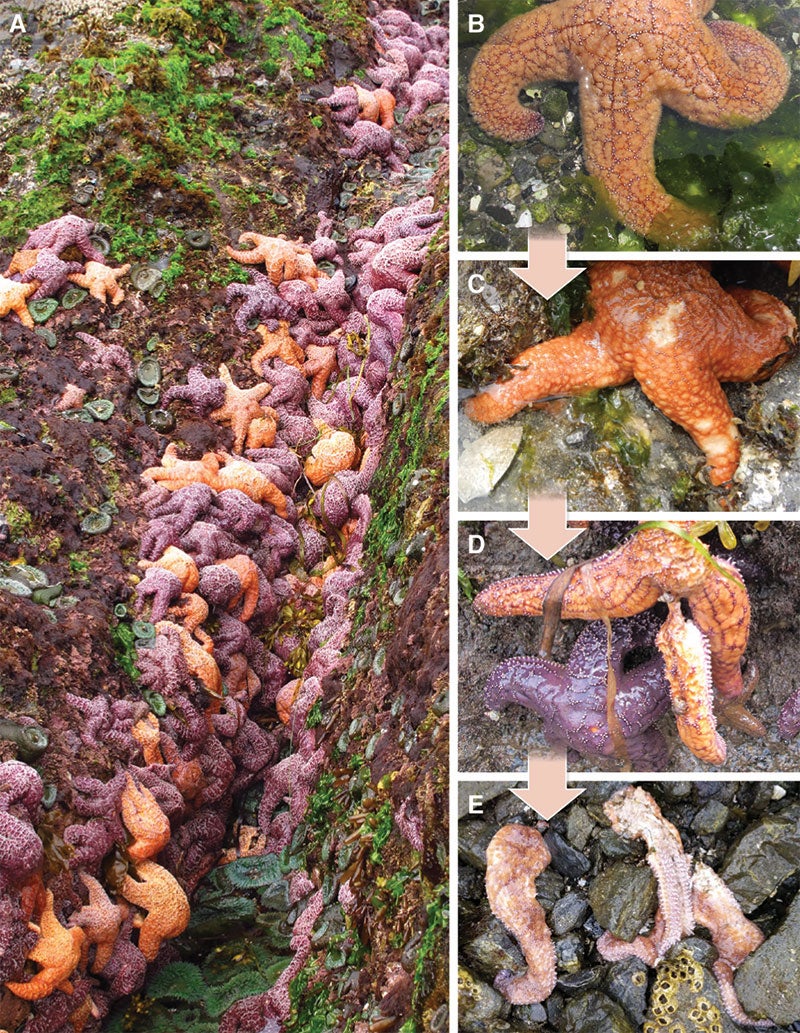Starfish are dying out in the Pacific – and no-one is quite sure why
The disappearance of sunflower starfish, also known as sea stars, is ‘going to change the shape of the ecosystem’, scientist says

Your support helps us to tell the story
From reproductive rights to climate change to Big Tech, The Independent is on the ground when the story is developing. Whether it's investigating the financials of Elon Musk's pro-Trump PAC or producing our latest documentary, 'The A Word', which shines a light on the American women fighting for reproductive rights, we know how important it is to parse out the facts from the messaging.
At such a critical moment in US history, we need reporters on the ground. Your donation allows us to keep sending journalists to speak to both sides of the story.
The Independent is trusted by Americans across the entire political spectrum. And unlike many other quality news outlets, we choose not to lock Americans out of our reporting and analysis with paywalls. We believe quality journalism should be available to everyone, paid for by those who can afford it.
Your support makes all the difference.Starfish are dying out on the Pacific Coast from Mexico to Alaska – and no-one is quite sure why.
The problem has been documented among starfish, or sea stars as they are also known, that live along the Pacific shore before.
But a new study has found species which live below the low tide mark are also being severely affected.
A horrific wasting disease broke out along the Pacific Coast of the Americas in 2013. Cuts appeared on the animals’ bodies which then got bigger and bigger, eating away at the tissue until whole limbs were severed.
Vast numbers of starfish died and while the disease has been linked to virus, it is thought environmental factors may also be playing a role.
Researcher Dr Joe Gaydos, chief scientist with the University of California’s Davis School of Veterinary Medicine, said the effects of the loss of so many starfish could be profound.

“Sunflower stars [one of the affected species] are major predators. This is probably going to change the shape of the ecosystem,” he said.
The study, described in the journal PLOS One, found sunflower stars have effectively disappeared from the Salish Sea, which is a large inlet straddling the US-Canadian border that is known for the diversity of its starfish.
As a result, it is thought the numbers of sea urchins – preyed on by starfish – will have increased, which could lead to a reduction in the amount of kelp, which the urchins eat.
However while the sunflower star, the spiny pink star and other species decreased in number, the population of the less common leather star increased.
Previous studies have found the ochre star, the most common type of starfish on the northern Pacific Coast of the US, has lost about 90 per cent of its population.
One theory is the warming sea temperatures make the starfish more vulnerable to the virus, which is usually not as deadly.
However the virus could have mutated to become more virulent.
Join our commenting forum
Join thought-provoking conversations, follow other Independent readers and see their replies
Comments